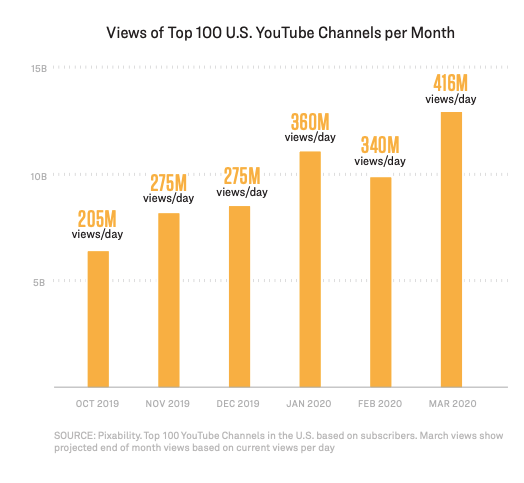
Best Practices for Navigating YouTube Strategies During These Difficult Times
During this very difficult time, we have been getting many questions from agencies and brands about what they should do with their YouTube advertising campaigns.
Depending on the industry and situation, we are seeing some advertisers pause to rethink their strategy, and others continuing forward. Regardless of the path each advertiser takes, we have suggestions about how every advertiser should adjust their approach. With this in mind, we’ve put together a short guide of seven best practices related to YouTube that we’ve seen used by brands and agencies.
We hope these tips can help you make important decisions today about what to do next on YouTube, but our team at Pixability is also here to answer specific questions related to each situation. Most of all, we hope that all of you — and your friends and family — stay safe during this troubling and complex time.
Check out some of the best practices below — and click here to view the full guide.
Collect Data on Overall YouTube Audience Behavior
The top question we’re getting from advertisers in recent weeks is “have you seen a big jump in YouTube viewership?” YouTube viewership is spiking as people are increasingly watching informative and/or entertaining videos to get them through the crisis. According to Nielsen, when viewers stay at home due to a broadly disruptive event, streaming media consumption rises 61%. Pixability is seeing that views among the top 100 US YouTube channels are tracking to be up 31% in March over the already high viewership in February (see below). In addition, Google has shared that there has been a 10X growth in watch time from day one to day 28 of the crisis in the U.S. (and has grown similarly worldwide).

Understand How To Approach Brand Suitability Around Coronavirus
Not surprisingly, search for coronavirus information on YouTube has increased dramatically in the past weeks. Advertisers have asked how they can avoid having their ads appear on sensitive content about the crisis. First off, YouTube has taken great measures to ensure ads will not show on search for any keywords related to this event. We at Pixability have also taken the additional protective measure of doing our own exclusions to include content with keywords that may even be remotely related to the crisis. For agencies or brands running campaigns on their own, we’re happy to share what our teams are doing.
Look To Organic Strategies
YouTube is the 2nd biggest search engine in the world, but many brands have not optimized their organic content. This is particularly important now as YouTube visits increase and ad budgets may be paused. A quick example from the meal kit industry is that people searching for Home Chef right now will see mostly user-generated content well before Home Chef’s channel comes up. There are ways to fix this. Whether you’re in a high-demand industry like food delivery, or a deeply impacted industry like travel, people may be searching for your brand or content during the crisis — but not seeing it, as the content has not been optimized for YouTube search. We are happy to do a free consultation with brands to help with organic strategy during this uncertain time.